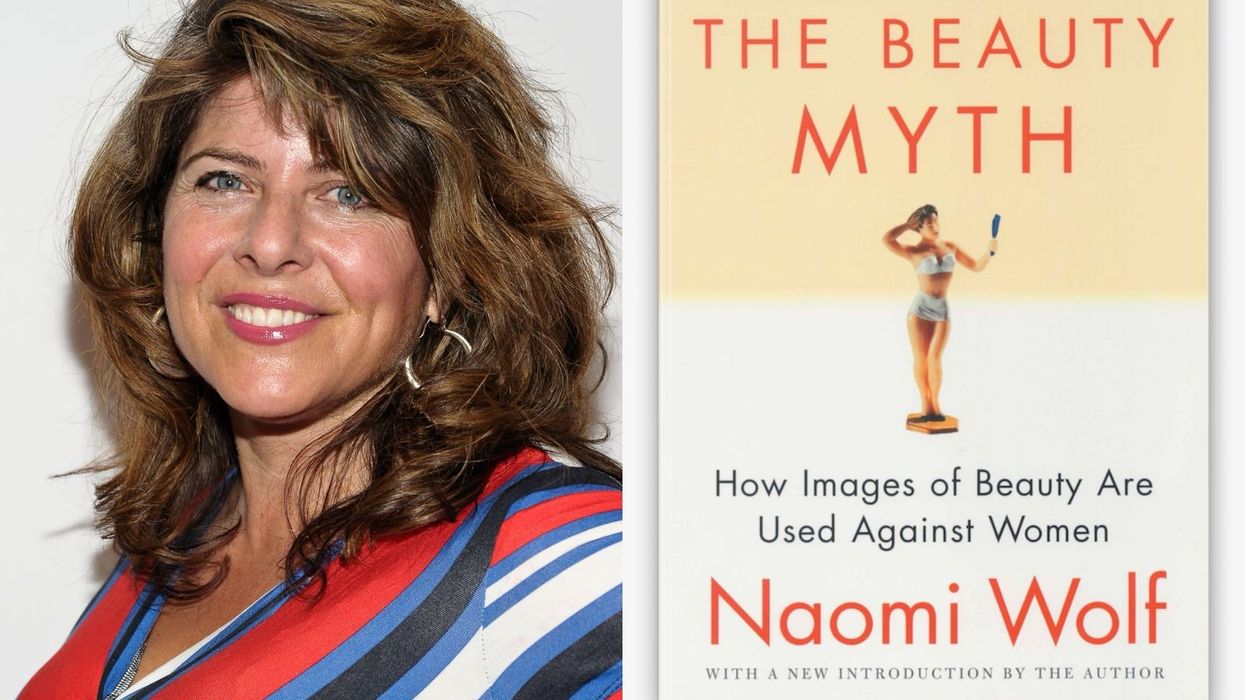The myth of the flawless feminist
Women are expected to be walking, talking TED Talks on feminism, unproblematic, unapologetic, yet somehow never too much. Every misstep, every contradiction, every guilty pleasure becomes proof that they’re “not feminist enough.” Like Beyoncé can’t call herself a feminist and still love a killer red lip? Like you can’t demand equal pay and secretly binge-watch reality TV? The expectation that women must embody a perfect, textbook feminism is not only exhausting, it’s also a trap.
But here’s the truth: feminism was never about perfection. It’s about progress. And that means making space for contradictions, for evolving perspectives, for the messy, complicated, real-life version of womanhood. If we don’t, we risk turning the movement into an exclusive club where nobody is good enough to join.
The double bind of female leaders
Women in leadership? Oh, they better be bossy but not too bossy. Confident but not too confident. Strong but, God forbid, not intimidating. Welcome to the double bind, where women in power are either “too much” or “not enough.”
Hold your fire until you’ve got a solid argument because this isn’t just opinion, science backs this up. Role Congruity Theory explains that women who display traditionally “masculine” leadership traits like assertiveness, decisiveness, and authority are often seen as unlikeable. But if they lean into warmth and empathy? Boom, suddenly they’re “not leadership material.” It’s a lose-lose game.

Just ask Jacinda Ardern. She led New Zealand through terrorist attacks, a pandemic, and an economic crisis with grace and strength. But when she stepped down, saying she had "nothing left in the tank," critics pounced. Would a male leader have been scrutinised the same way? Highly unlikely. The idea that women in power must be tireless, flawless superhumans is just another version of the “perfect feminist” myth.
The beauty myth: Still haunting us
Naomi Wolf’s The Beauty Myth wasn’t just a book, it was a prophecy. Decades later, women are still held to impossible beauty standards. The goalpost keeps shifting, but the message remains the same, right? Be successful, but don’t look like you’re trying too hard. Be sexy, but not too sexy. Age gracefully, but don’t look like you’re ageing.

Case in point: Hillary Clinton spent her entire 2016 presidential campaign being critiqued for her outfits, her hair, her face. Meanwhile, her opponent? Tan lines and ill-fitted suits for days, yet nobody batted an eye. Or look at Serena Williams, one of the greatest athletes of all time, who’s had to defend her body against critics who think she doesn’t fit their outdated version of femininity.

Women are fighting for boardroom seats and political power while also making sure their makeup is “natural but polished.” Exhausting, right? The modern feminist movement must stop pretending that caring about beauty makes someone less serious or less committed to the cause. Because listen up, feminism should liberate, not judge.
The domestic double standard: Work, then work some more
We love a career woman, but also, who’s packing the kids’ lunch?
Despite all the progress we keep talking about, women are still expected to dominate at work and run the household like a 1950s housewife. In Australia, women do 50% more housework than men, leading to what researchers charmingly describe as "volcanic levels of resentment." Globally, women spend 2.6 times more hours on unpaid domestic labour than men. Surprising? I hope not.

Even in parenting, sometimes the standards are ridiculous. If a father takes his kid to the park, he’s hailed as a green-flag dad hero. If a mother does it, well... isn’t that her job?
And don’t even get started on the pressure for women to “have it all.” The truth is, no one ever asks men if they “have it all.” They’re just expected to have supportive partners handling the behind-the-scenes labour, tasks, and chaos. But shouldn’t feminism be about fighting for balance and not expecting women to be superheroes who do it all with a smile, right?
From Beyoncé to Emma Watson: When feminism comes with a rulebook
In case you feel alone, even the most high-profile feminists can’t escape the backlash:
- Beyoncé – Called a hypocrite for her Flawless anthem because she embraces hyper-feminine aesthetics. Traywick of Foreign Policy called it “an overly simplistic, inoffensive pro-girl anthem that does little to challenge trenchant gender ideals.” As if feminism means you have to wear baggy jeans and avoid red lipstick at all costs.
- YouTubeyoutu.be
- Emma Watson – Posed semi-topless for Vanity Fair and got dragged for it. Because apparently, owning your sexuality contradicts fighting for gender equality? Her response? “Feminism is not a stick with which to beat other women with. It’s about freedom, it’s about liberation, it’s about equality.” And yet, feminism is often treated as just that, a rigid set of rules rather than a movement for autonomy.
BBC Newsroar-assets-auto.rbl.ms
- Deepika Padukone – She dropped My Choice in 2015, a sleek, high-production feminist short film. But instead of applause, she got an internet roast session. Some called it empowering, while others labelled it elitist and out of touch with everyday Indian women. The message? Autonomy. The reaction? Chaos. The debate over who gets to claim feminism foreshadowed today’s cancel culture, where feminist statements are either glorified or torn apart within hours.
- YouTubeyoutu.be
- Madonna – Queen of pop? Yes. Queen of feminist contradictions? Also yes. Madonna built a career on pushing boundaries, owning female sexuality long before it was cool. But while she saw empowerment, critics saw exploitation. From Like a Virgin to her Truth or Dare perfume, the debate rages on: Is she an icon, or is she playing the system? Either way, she walked so Gen Z feminists could debate it on TikTok.
- YouTubeyoutu.be
But in today’s cultural climate, younger feminist artists like Billie Eilish and Olivia Rodrigo are thankfully reshaping the conversation. Eilish, in particular, has criticised the hyper-sexualisation of women in the music industry, once saying she intentionally wore baggy clothes to avoid being objectified. However, when she later embraced a more traditionally feminine style, she too faced backlash.
- YouTubeyoutube.com
Feminism that doesn’t allow for evolution is just another cage. Women should be allowed to explore, contradict themselves, change their minds, and still be taken seriously.
#Metoo, social media, and the messy reality of feminism
The #MeToo movement did something radical, it made people listen. But it also revealed how feminism isn’t always black and white. Take the Amber Heard vs. Johnny Depp trial. It even divided feminists into those who believed Heard without question and those who saw it as proof that false accusations exist.
Then there’s TikTok feminism, where trends like bimbo feminism, tradwife culture, and hyper-femininity make waves. Some see these as reclaiming femininity, others as reinforcing gender stereotypes. Who’s right? Maybe both. Maybe neither. Maybe feminism is just complicated.

The courage to be imperfect
So what if you don’t read every feminist theory book? So what if you still love cheesy rom-coms, wear makeup, or enjoy cooking for your partner? In case no one told you, being a feminist isn’t about meeting some rigid checklist of acceptable behaviours. It’s about demanding equality while embracing the beautiful, messy contradictions of being human.

The expectation of a perfect feminist only alienates people from the movement. Instead, let’s create space for real women, ones who sometimes mess up, sometimes change their minds, sometimes prioritise self-care over activism. That doesn’t make them less feminist. It makes feminism stronger.
Let’s redefine the rules
Feminism was never meant to be an exclusive club. It’s a movement, a conversation, a revolution. And we know revolutions aren’t tidy.
So this Women’s Day, let’s celebrate the feminists who dare to be imperfect. Let’s shatter the illusion of the flawless feminist and champion a movement that is raw, real, and relentless. Because the future of feminism isn’t about meeting unrealistic expectations, it’s about rewriting them entirely.
Welcome to the era of bad feminism, the kind that actually gets things done.







 Female athletes says safety-related spending has become “a standard line in budgeting”iStock
Female athletes says safety-related spending has become “a standard line in budgeting”iStock






